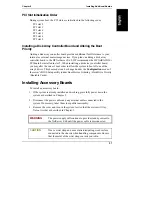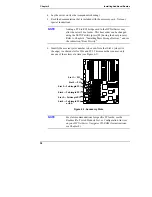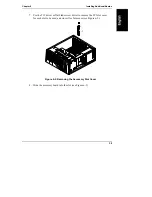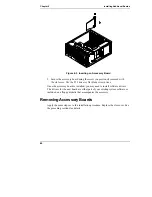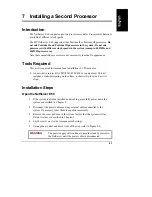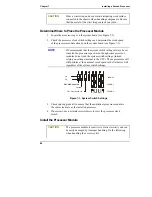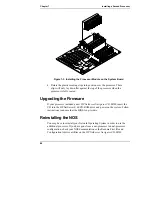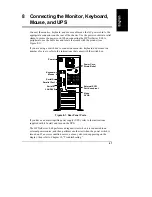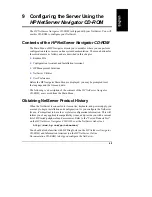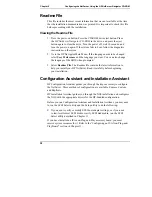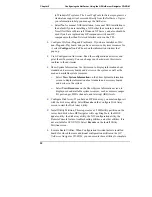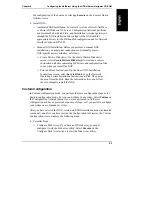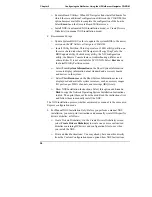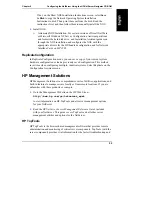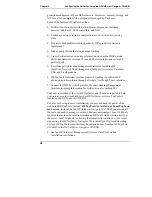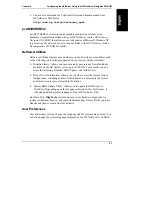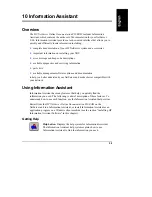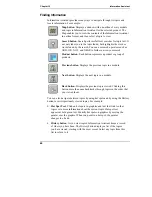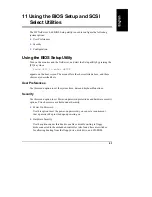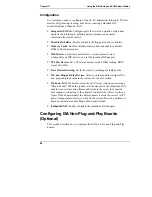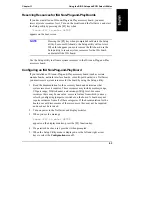
Chapter 9
Configuring the NetServer Using the HP NetServer Navigator CD-ROM
51
Run Configuration Assistant and Installation Assistant
Insert the
HP NetServer Navigator CD-ROM
into the CD-ROM drive. Turn the
power off, wait 10 seconds, and turn the power on again. If the system fails to
start, follow the instructions on the screen.
1. When HP NetServer Navigator starts, you may need to set the language,
time, and date. Follow the onscreen instructions. You can also change the
language of the BIOS when prompted.
2. Go to the HP NetServer Navigator Main Menu and select "Configuration
Assistant and Installation Assistant."
3. Follow the onscreen instructions in Configuration Assistant to continue
your NetServer installation.
Express Configuration
Express configuration is the preferred method to configure your NetServer, since
it leads you through the configuration process in sequence and offers you default
selections. Express configuration includes the following steps:
•
Update System BIOS: This step appears if Configuration Assistant detects
that a newer version of the BIOS is available on the
HP NetServer
Navigator CD-ROM
. You must update your BIOS to the new version if
you want to continue in Express mode. You can also update the language
that the BIOS displays.
•
Select NOS: You will be asked to select the NOS and version that you
plan to install.
•
Select NOS Installation Mode: For certain versions of Novell NetWare
and Microsoft Windows NT Server, you will be asked,
Would you like to use HP's automated mode of NOS
installation?
◊
Select
Yes
for automated NOS installation, which will guide you
through the NOS installation, set up the hard disk drive, and configure
your NOS with appropriate drivers for HP-bundled configurations.
Perform an automated NOS installation for first-time installation of
Novell NetWare or Microsoft Windows NT Server on a factory-
configured NetServer, or one to which you have added a Network
Interface Card listed on HP's Tested Products List (TPL). This
installation also loads Local TopTools for Servers onto Windows NT
or NetWare systems, as well as pcANYWHERE-32 for remote access

